Parkavi
Thursday, 19 December 2013
Thursday, 27 June 2013
Europe's spectacular natural heritage
UNESCO World Heritage Sites aren't all about man-made monuments: they include lakes, mountains, glaciers, forests, valleys and volcanoes, all of them magnificent in their own way. Here we invite you to take a photo tour of some of the most spectacular natural sights across Europe.
Dramatic mountains – the vast Durmitor massif in the eponymous national park in northwestern Montenegro, the volcanic mass of Mount Teide, and the dramatic Dolomites in the Italian Alps where green wooded valleys and meadows are set off agains the bare rocks of the mountains; ancient forests and woodlands – the laurisilva of Madeira, the beech woods of the Carpathians and the primal forest of Poland; fantastic rock formations and sculptures carved by the elements and the slow movement of the earth's crust; areas of rivers, lakes and waterfalls... All the vast range of geological and natural scenery and the enormous biodiversity of flora and fauna that it supports is reason to celebrate Europe's natural heritage. Here we have a selection of photos of some of the places classed as World Heritage Sites by UNESCO.Use the left and right arrow keys to view the images
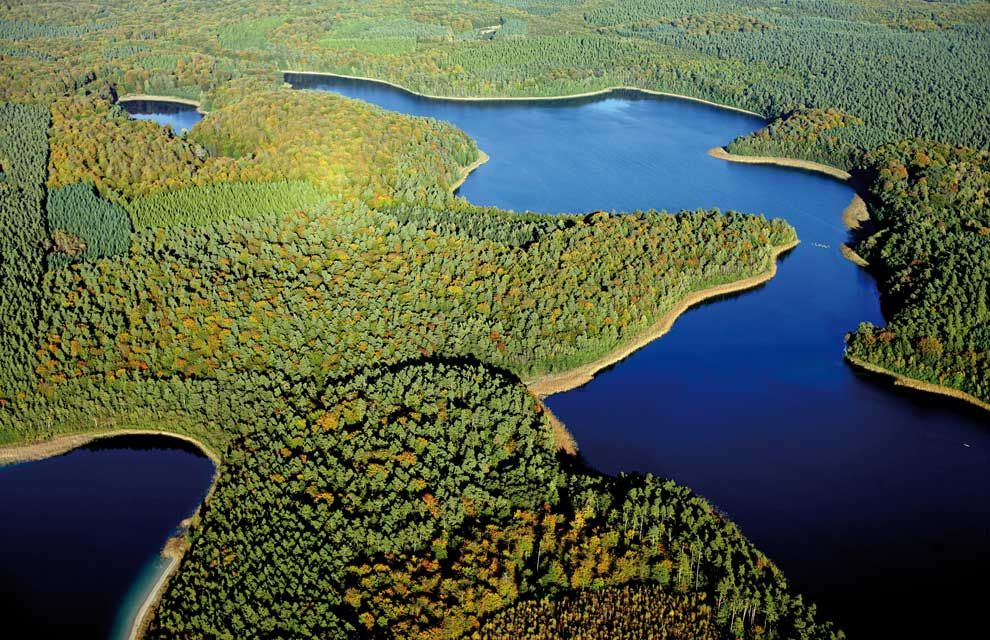
The Primeval Beech
Forests of the Carpathians and the Ancient Beech Forests of Germany
total an area of almost 30,000 hectares, over 4,000 of which are in
Germany / German Tourist Board
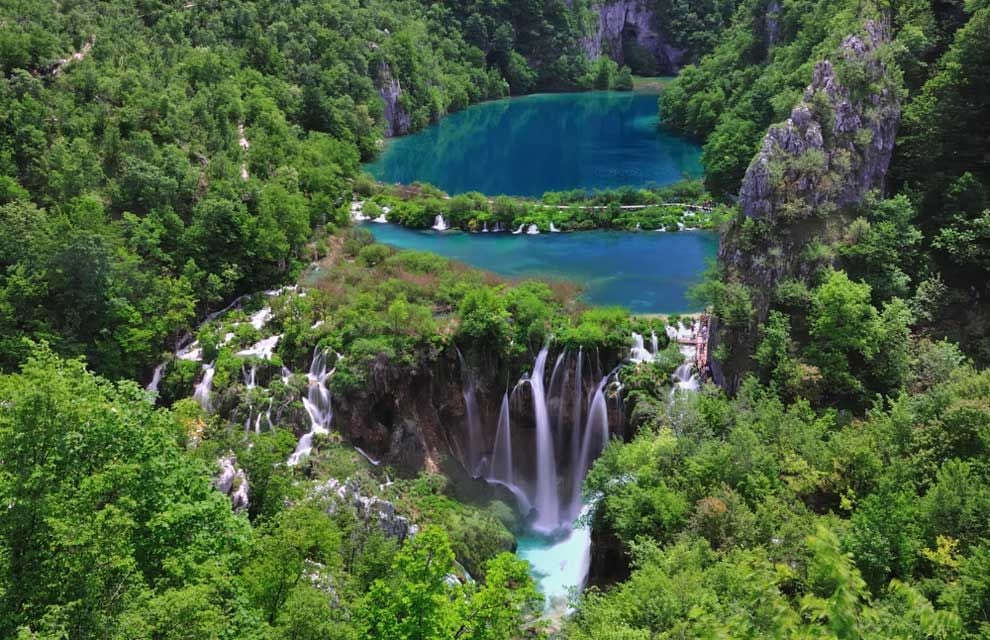
The Plitvice Lakes
National Park is the best known in Croatia, where a veritable paradise
of green water flows between 16 interconnected lakes and around a
hundred waterfalls. The thick forests of beech, fir and pine are home to
bears, wolves and many rare bird species / Croatian Tourist Board

At 3,718 metres,
the Teide volcano on the island of Tenerife is the world's third-tallest
volcano, and those who have stood at the crater say the experience is
like touching the sky / © Tenerife Tourist Board
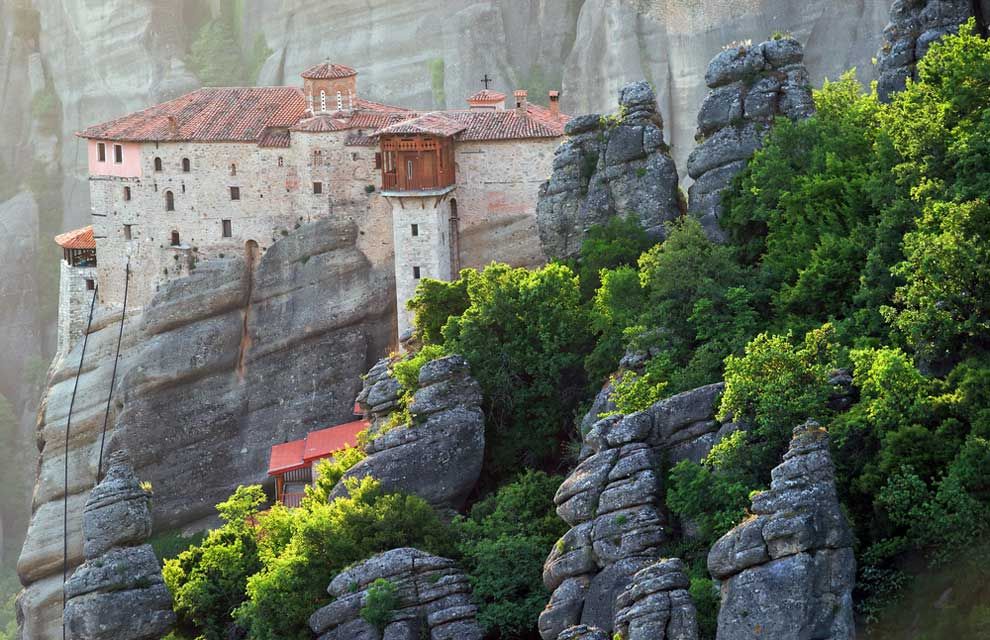
Meteora –
'suspended in the air' – is the perfect name for these rock pinnacles of
sandstone that rise over the Peneas valley and the Thessalian plain.
The orthodox monasteries perched atop the natural columns date from the
fourteenth century and transform a natural wonder into a unique artistic
achievement / Greek Tourist Board
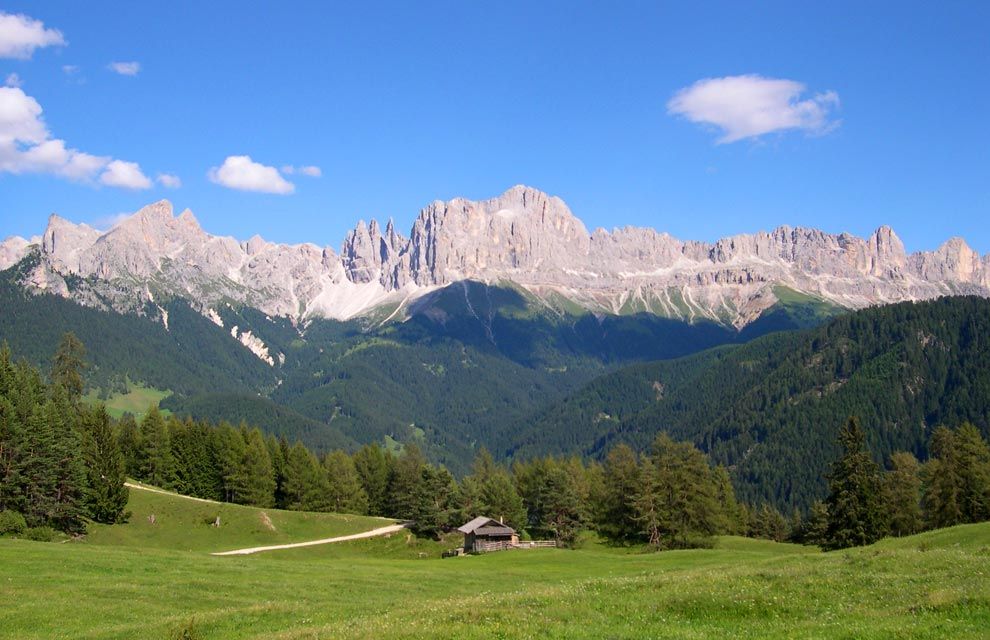
The vertical walls,
sheer cliffs and narrow, deep, long valleys of the Dolomites in the
northern Italian Alps present a diversity of exceptional landscapes
where natural pinnacles, spires and towers sculpted from the pale rock
rise in dramatic contrast above the forests and meadowland below
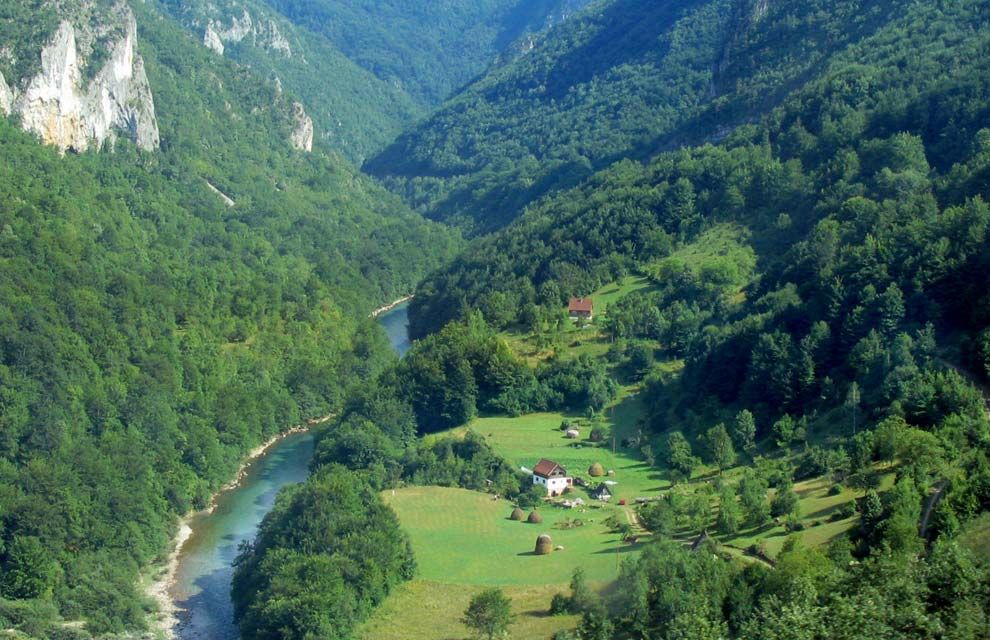
Crossed by multiple
rivers and underground streams, the Durmitor National Park in
Montenegro boasts clear lakes and dense pine forests. With both
Mediterranean and alpine microclimates, the area is home to an
exceptional range of wildlife
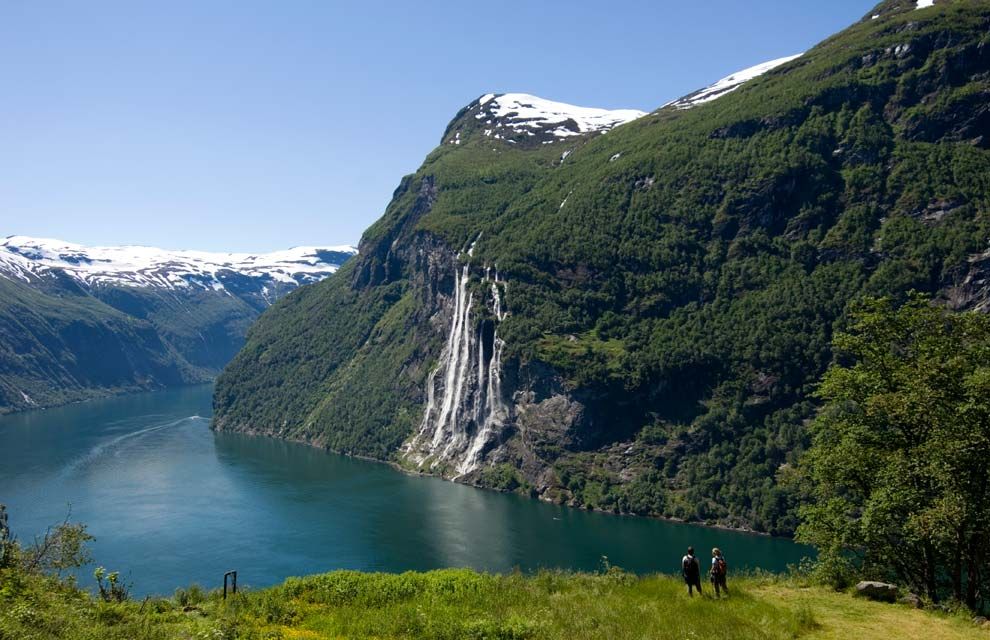
A cruise on the
West Norwegian Fjords Geirangerfjord and Naeroyfjord will show you
snow-capped peaks, waterfalls and almost sheer crystalline rock walls
with ancient farmsteads perched on the slopes / Norwegian Tourist Board
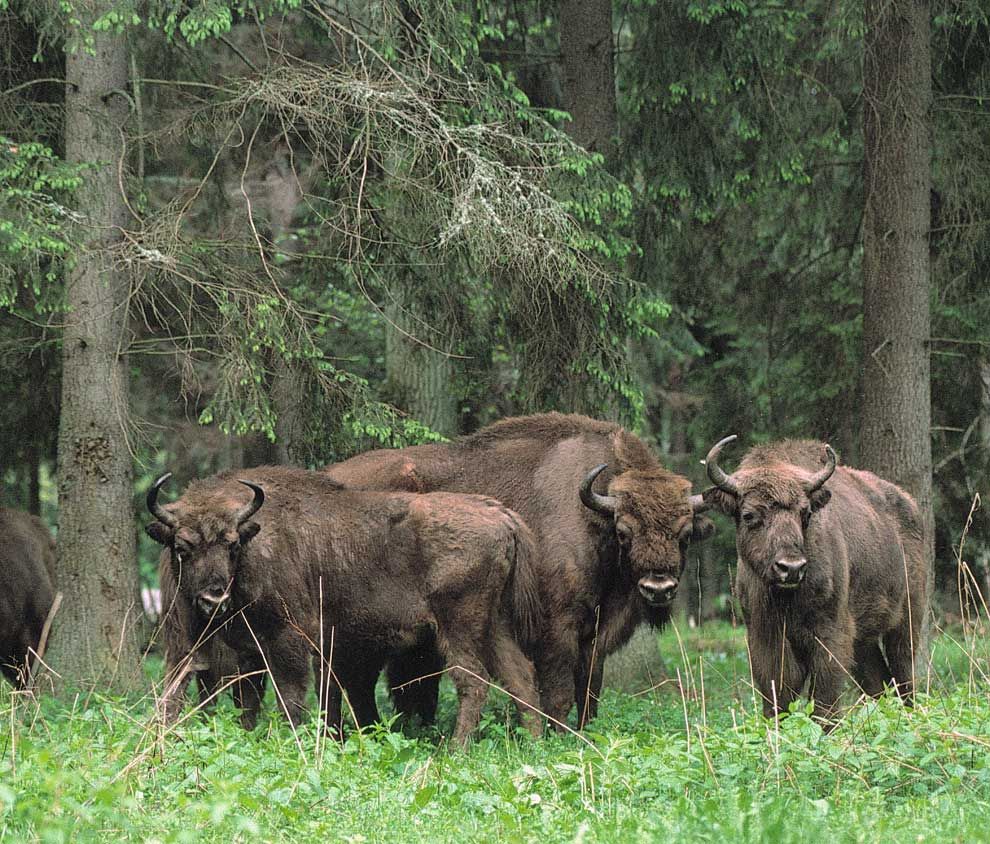
Dating back to 8000
BC, Poland's Bialowieza Forest is the only remaining example of the
original forests that once covered much of Europe. Many large mammals
live here, including wolves and lynx, as well as some 300 European Bison
which have been re-introduced into the protected area / Polish Tourist
Board
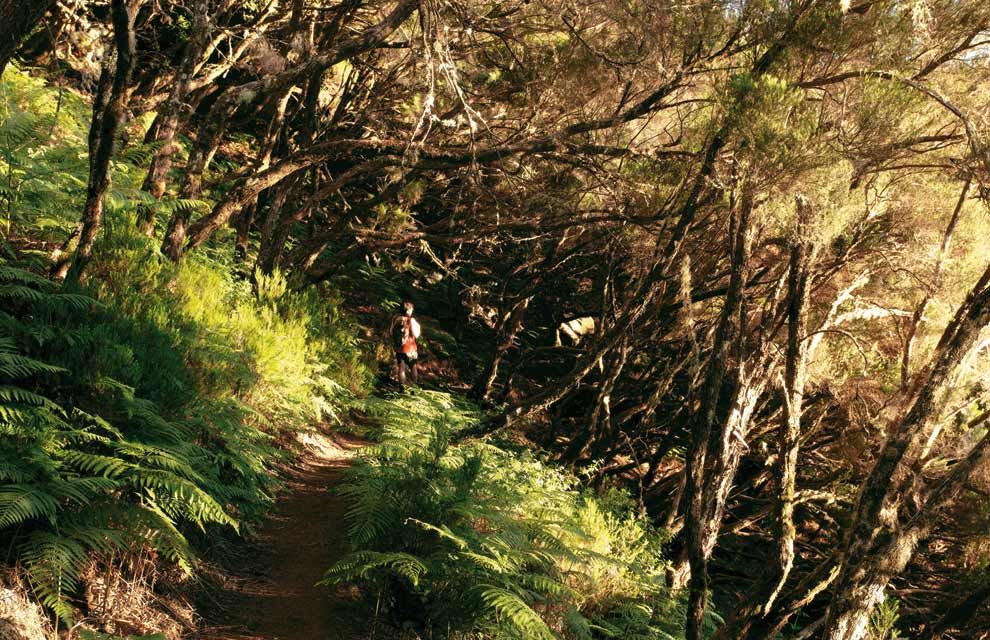
The Laurisilva of
Madeira – the laurel forest - is located on the main island. Its size
and quality make it a valuable relict of this previously widespread
forest type which is now virtually extinct / Portuguese Tourist Board
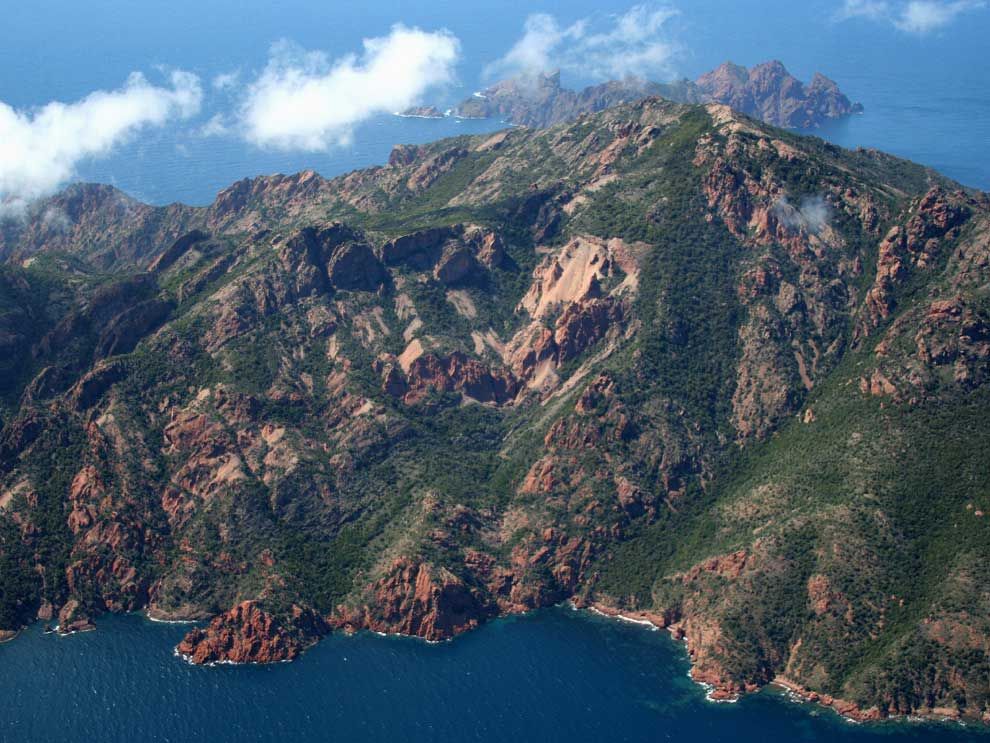
On the western
coast of Corsica, the translucent waters of the Gulf of Porto, along
with the calanche of Piana, Gulf of Girolata and the Scandola Reserve,
are home to a rich marine life, and gulls, cormorants and sea eagles
nest here / French Tourist Board
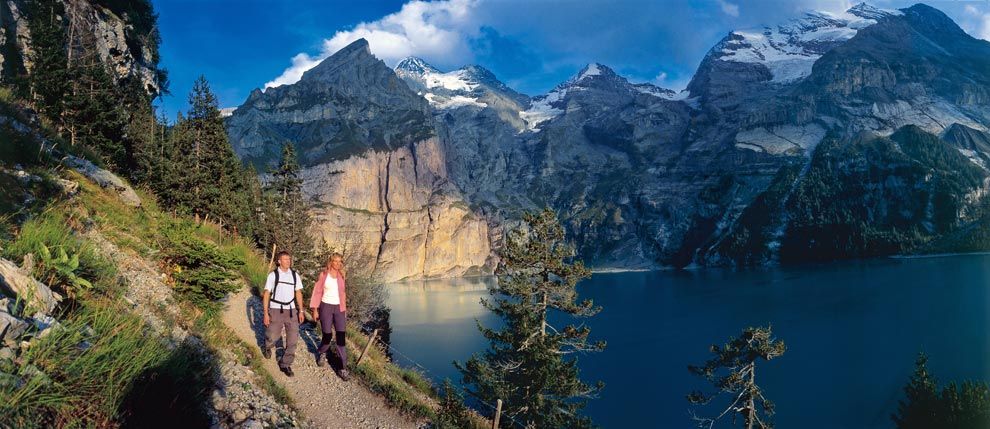
The dramatic
mountains, valleys and glacial landscape of Jungfrau - Aletsch -
Bietschhorn in the Swiss Alps includes the largest glacier in Eurasia /
Swiss Tourist Board
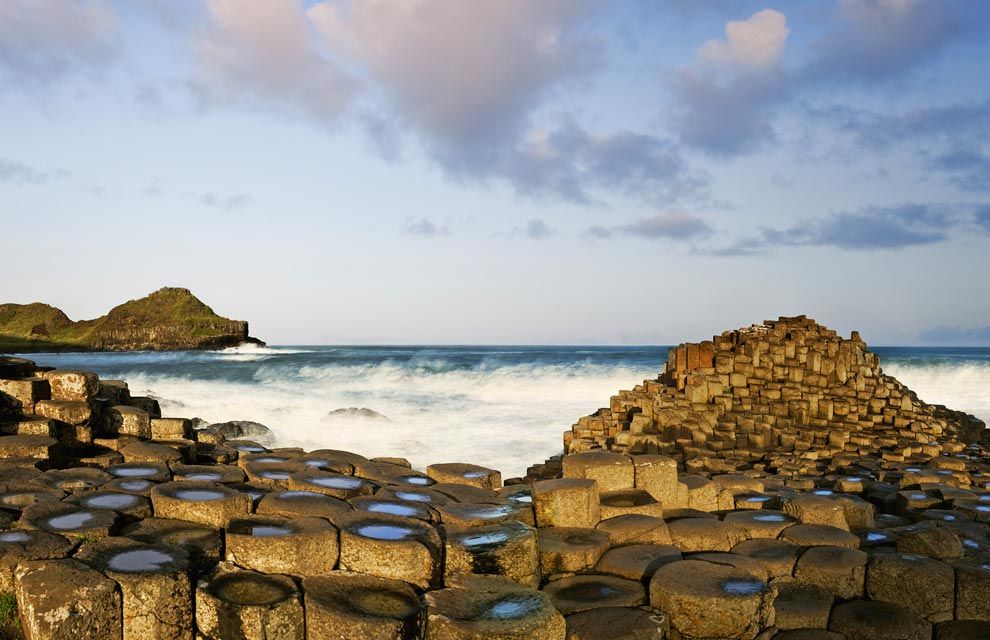
The Giant's
Causeway, on the coast of County Antrim, Northern Ireland, comprising
some 40,000 polygonal basalt columns averaging 45 cm in diameter, has
given rise to many tales and legends / British Tourist Board
Top 10 Tourist Destinations in India
India is very very diverse – probably the most diverse of countries that you will find on this earth. We have some of the Coldest places in Kashmir, A place that has highest rainfall in world – Cherrapunji, and also one if the driest places on the Earth – The Thar Desert. Adding to that – More than half of Indian boundary is home to beautiful beaches. And don’t forget that Northern part of India hosts Himalayan Ranges snow capped mountains.
Mix all this with different cultures and hundreds of Languages and Dialects – You have a got a potent mix of diversity. If you really think, I really am amazed that with such diverse people & geographies how do we operate as one single democratic country !
Anyways, I am digressing here. Let me now give you
The Top 10 Tourist Destinations in India
Agra
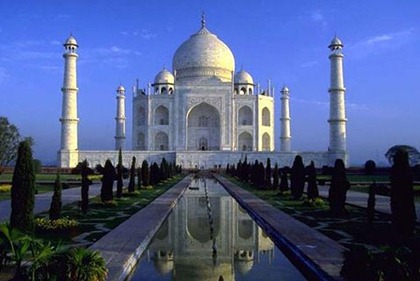
Agra’s Taj Mahal is one of the most famous buildings in the world, the mausoleum of Shah Jahan’s favorite wife, Mumtaz Mahal. It is one of the New Seven Wonders of the world, and one of three World Heritage Sites in Agra.
Completed in 1653, the T?j Mahal was built by the Mughal king Sh?h Jah?n as the final resting place for his beloved wife, Mumt?z Mahal. Finished in marble, it is perhaps India’s most fascinating and beautiful monument. This perfectly symmetrical monument took 22 years (1630-1652) of hard labour and 20,000 workers, masons and jewelers to build and is set amidst landscaped gardens.
Jaipur / Udaipur
Jaipur is also popularly known as the Pink City, is the capital of the Indian state of Rajasthan. Jaipur is a very famous tourist and education destination in India.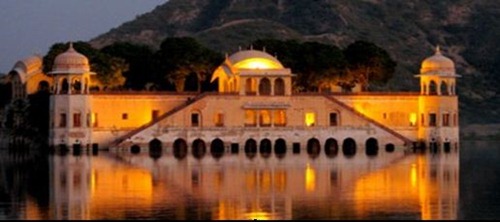
Lots of people flock to Jaipur to view the various forts and monuments in Jaipur which reflect its glorious past. Tourism is a significant part of Jaipur’s economy. Some of the world’s best hotels are located here.
Forts & Monuments
- Hawa Mahal
- Amber Fort
- Jaigarh Fort
- Nahargarh Fort
- City Palace
- Jantar Mantar
- Jal Mahal
- Rambagh Palace
- Chandra Mahal, The City Palace, Jaipur
- Diwan-e-Aam, City Palace
- Central Museum, (Albert Hall Museum)
Goa
Goa is Famous for its pristine beaches, infact 90% of all the tourism in Goa happens only for its beautiful beaches in Coastal Areas. Goa has two main tourist seasons: winter and summer. In the winter time, tourists from abroad (mainly Europe) come to Goa to enjoy the splendid climate. In the summertime (which, in Goa, is the rainy season), tourists from across India come to spend the holidays.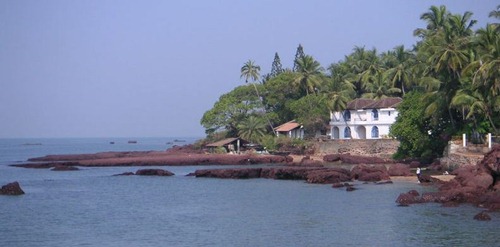
In 2008 there were more than three million tourists reported to have visited Goa, more than half million of whom were from Foreign visitors. Infact, many foreigners have made Goa as there home for its laid-back and relaxed lifestyle !
Kashmir
Kashmir was once called Heaven on Earth, and once of the most beautiful places in the world. However, in last couple of decades, terrorism has faded its charm – A place home to Himalayan Ranges.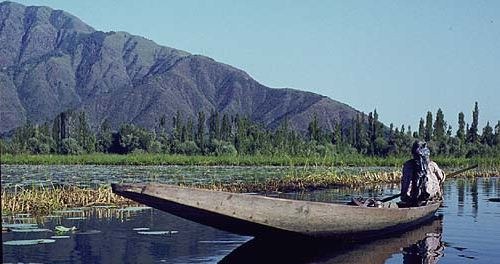
The State of Jammu & Kashmir has main three geographical regions known as “The Lesser Himalayas” or the “Jhelum Valley” (Kashmir), “The Inner Himalayas” or “The Indus Valley” (Ladakh & Frontier areas) also called “Trans-Himalayas”, and “The Outer-Himalayas” or “The Southern mountain range” (Jammu). The area of Jammu & Kashmir is 2, 22,236 square kilometers.
Kanyakumari
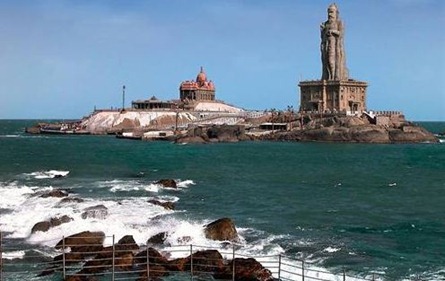
Though there are several places of tourist-interest in the town and district, Kanyakumari is especially popular in India for its spectacular and unique sunrise and sunset. The confluence of three ocean bodies – the Bay of Bengal, the Indian Ocean, and the Arabian Sea – makes the sunrise and sunset even more special. On balmy, full-moon evenings, one can also see the moon-rise and sunset at the same time – on either side of the horizon.
Kerala (Backwaters)
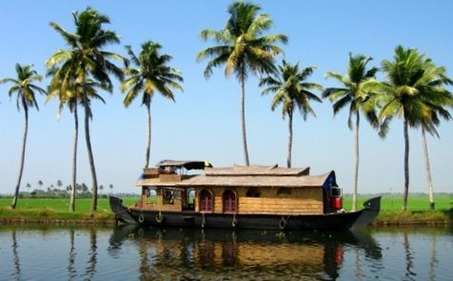
Kerala, situated on the lush and tropical Malabar Coast, is one of the most popular tourist destinations in India. Named as one of the "ten paradises of the world" and "50 places of a lifetime" by the National Geographic Traveler magazine, Kerala is especially known for its ecotourism initiatives, Beautiful Backwaters and Alternative healing massages.
Old Delhi
Delhi, Capital of India has many attractions like mosques, forts and other monuments that represent India’s history. The important places in Old Delhi include the majestic Red Fort. New Delhi on the other hand houses many government buildings and embassies, apart from places of historical interest.
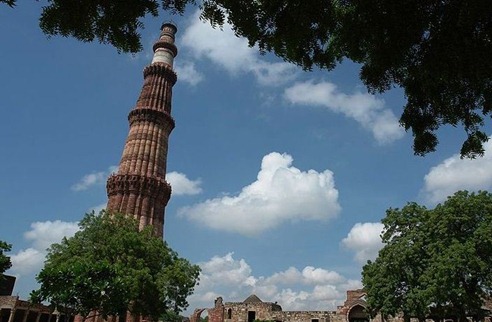
The Qutub Minar, Red Fort and Humayun’s Tomb have been declared World Heritage Sites.
Ajanta Ellora
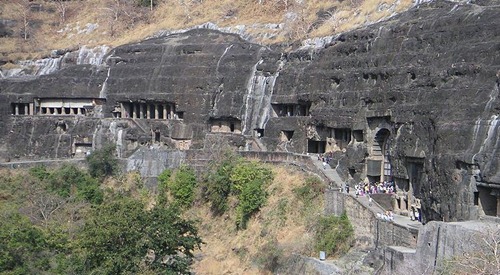
Ajantha & Ellora are 28 – 30 rock-cut cave monuments created during the first century BC and 5th century AD, containing paintings and sculptures considered to be masterpieces of both Buddhist religious art and universal pictorial art.
The caves are located just outside the village of Ajantha / Ellora in Aurangabad district in the Indian state of Maharashtra.
Since 1983, the Ajanta & Ellora Caves have been a UNESCO World Heritage Site.
Darjeeling
Darjeeling in India owes’ its grandeur to its natural beauty, its clean fresh mountain air and above all, the smiling resilient people for whom it is a home. Known for its natural splendor, Darjeeling’s best gift to its’ visitors is the dawn of a new day. The mountains awaken first with a tentative peeking of the sun.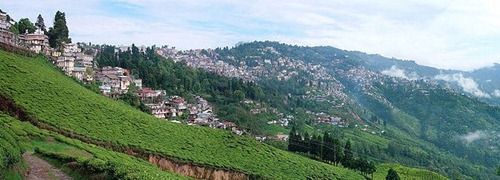
A steep ride, five kilometers from Ghoom, or an invigorating walk up a steep incline, leads sun worshippers to Tiger Hill. The air is chilly with darkness and damp. To the east, a dull orange sun emerged painting the sky with brilliant strokes of magenta, gold, orange and fuchsia. The snow capped Everest, Kabru, Kanchenjunga, Jannu and other peaks slowly emerge from slumber to start a new day. The sun worshippers gasp at the magnificent sight.
Mysore
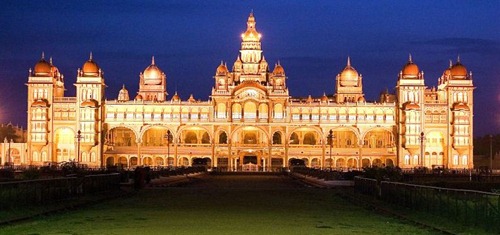
Mysore is a tourism hot spot within the state of Karnataka and also acts as a base for other tourist places in the vicinity of the city. The city receives the maximum number of tourists during the period of the Dasara festival when festivities take place for a period of 10 days. One of the most visited monuments in India, the Ambavilas Palace (also known as Mysore Palace) is the center of the Dasara festivities.
Hope you have found this Top Ten Tourist Destinations in India article interesting. If you have any questions, do drop in a comment.
Wednesday, July 18, 2012
'கடவுள் அணு’வும் சிவனின் நடனமும்! – எஸ்.குருமூர்த்தி
 ‘கடவுள்
அணு’ என்று விஞ்ஞானிகளால் செல்லமாக அழைக்கப்பட்ட, எல்லா அணுக்களிலும்
நுண்ணியதும், ஆதாரமானதுமான நுண்மையான அணுவை, சுமார் 14 ஆண்டுகள் முயற்சி
செய்து, ஏறக்குறைய ரூ.20,000 கோடி செலவு செய்து, ஸ்விட்சர்லாந்து –
பிரான்ஸ் நாட்டு எல்லையில் உருவாக்கப்பட்ட ‘செர்ன்’ என்கிற விஞ்ஞான
ஆராய்ச்சி சாலை, அடையாளம் கண்டு விட்டதாக ஜூலை 4-ஆம் தேதி
அறிவிக்கப்பட்டபோது உலகமே வியந்தது. இந்த ‘கடவுள் அணு’ என்று அழைக்கப்படும்
துண்டு அணுவுக்கு உண்மையான பெயர் ‘ஹிக்ஸ்-போசான்’ என்பது. இது இரண்டு
விஞ்ஞானிகளுடைய பெயர்களின் இணைப்பு. இதில் ஹிக்ஸ் என்பது இங்கிலாந்து
நாட்டு விஞ்ஞானியின் பெயர். இவர் இன்னும் உயிருடன் இருக்கிறார்.
‘கடவுள்
அணு’ என்று விஞ்ஞானிகளால் செல்லமாக அழைக்கப்பட்ட, எல்லா அணுக்களிலும்
நுண்ணியதும், ஆதாரமானதுமான நுண்மையான அணுவை, சுமார் 14 ஆண்டுகள் முயற்சி
செய்து, ஏறக்குறைய ரூ.20,000 கோடி செலவு செய்து, ஸ்விட்சர்லாந்து –
பிரான்ஸ் நாட்டு எல்லையில் உருவாக்கப்பட்ட ‘செர்ன்’ என்கிற விஞ்ஞான
ஆராய்ச்சி சாலை, அடையாளம் கண்டு விட்டதாக ஜூலை 4-ஆம் தேதி
அறிவிக்கப்பட்டபோது உலகமே வியந்தது. இந்த ‘கடவுள் அணு’ என்று அழைக்கப்படும்
துண்டு அணுவுக்கு உண்மையான பெயர் ‘ஹிக்ஸ்-போசான்’ என்பது. இது இரண்டு
விஞ்ஞானிகளுடைய பெயர்களின் இணைப்பு. இதில் ஹிக்ஸ் என்பது இங்கிலாந்து
நாட்டு விஞ்ஞானியின் பெயர். இவர் இன்னும் உயிருடன் இருக்கிறார்.1998-ல் துவங்கிய இந்த விஞ்ஞான முயற்சி எல்லாவற்றுக்கும், 74 ஆண்டுகளுக்கு முன், 1924-ஆம் ஆண்டு பிள்ளையார் சுழி இட்டவர், நம் நாட்டு விஞ்ஞானியான கல்கத்தாவைச் சேர்ந்த சத்யேந்திரநாத் போஸ் என்கிற இளைஞர். 1894-ல் பிறந்த இவர், 1924-ஆம் ஆண்டு அணுவையும் அணுசக்தியையும் கண்டுபிடித்த ஆல்பர்ட் ஐன்ஸ்டீனுக்கு, ஆராய்ச்சிக் கட்டுரை ஒன்றை அனுப்பினார். அப்போது அவருக்கு 30 வயது. அவரும் ஐன்ஸ்டீனும் சேர்ந்து செய்த ‘ஐன்ஸ்டீன் - போஸ் கண்டேன்செட்’ என்கிற கண்டுபிடிப்புதான், செர்ன் விஞ்ஞானிகள் இப்போது கண்டுபிடித்திருக்கும் நுண் அணுவைத் தேடுவதன் துவக்கம். அணுக்களுக்கு உப அணுக்கள் உண்டு என்பதற்கு போஸின் சிந்தனைதான் துவக்கமாக இருந்தது.
அவருடைய பெயரில் ஒரு அங்கமான ‘போஸ்’தான் ஹிக்ஸ்-போசான்’ என்கிற இரட்டைப் பெயரில் இரண்டாவது அங்கமாக இணைக்கப்பட்டிருக்கிறது. அந்த ஆய்வுதான் இன்று ஆயிரக்கணக்கான கோடி ரூபாய் செலவில், ஆயிரக்கணக்கான விஞ்ஞானிகளின் பிரம்மாண்டமான முயற்சியாக மாறி, ஒரு பெரும் சாதனையை நிகழ்த்தி இருக்கிறது. செர்ன் அமைப்பின் விஞ்ஞானிகள் கூறியிருப்பது இதுதான்: ‘இதுவரை ஹிக்ஸ்-போசான் என்கிற நுண்ணணு இருக்கிறது என்று நினைத்தது சரி என்று தோன்றுகிறது. நாங்கள் கண்டுபிடித்திருப்பது 99.999 சதவிகிதம் அதுதான். இந்த அணுதான் பிரபஞ்சத்தில் இருக்கும் தோற்றம், பரிமாணம், உருவமைப்பு சம்பந்தப்பட்ட எல்லா ரகசியத்திற்கும், கேள்விகளுக்கும் விடையாக இருக்கும். இதன் மூலம் தெளிவு கிடைக்கிற வாய்ப்பு இருப்பதால், இந்த அணுவை ‘கடவுள் அணு’ என்று ஒரு நோபல் பரிசு பெற்ற விஞ்ஞானி கூற, எல்லோரும் அப்படியே இந்த அணுவை அழைக்க ஆரம்பித்திருக்கிறார்கள்.
‘ஹிக்ஸ்-போசான்’ அணுவுக்கும், பாரத நாட்டுக்கும் தொடர்புண்டு. இதை சத்யேந்திரநாத் போஸ் மட்டுமல்ல, செர்ன் விஞ்ஞானிகளின் அமைப்பின் அதிகாரபூர்வ அறிவிப்பாளரான பாவ்லோ குபிலினோ, இந்தக் கண்டுபிடிப்பு வெளிவருவதற்குப் பல மாதங்களுக்கு முன்னரே, அக்டோபர் 2011-ல், ‘பாரத நாடுதான் இந்தக் கடவுள் அணுவைக் கண்டுபிடிக்கும் முயற்சிக்குத் தாய்’ என்று பட்டவர்த்தனமாகக் கூறினார். எங்கோ ஆயிரக்கணக்கான விஞ்ஞானிகள் இரவு பகல் பாராமல் செய்யும் இந்த முயற்சிக்கு, எப்படி பாரதம்தான் தாய் என்று அவர் கூறினார்?
பாரத நாட்டுக்கும், இந்த கடவுள் அணு என்று நம்பப்படும் ‘ஹிக்ஸ்-போசான்’ அணுவுக்கும் வேறு என்ன தொடர்பு? அந்தத் தொடர்பை அறிய வேண்டுமென்றால், 2004-ஆம் ஆண்டு செர்ன் ஆய்வுக்கூடத்தில் நிகழ்ந்த ஓர் அதிசயமான நிகழ்ச்சி பற்றித் தெரிய வேண்டும்.
2004 ஜூன் 18 அன்று செர்ன் ஆய்வுக் கூடத்தின் அரங்கத்தில், 6 அடி உயரம் கொண்ட சிதம்பரம் நடராஜர் சிலை நிர்மாணம் செய்யப்படுகிறது. சரி, செர்ன் ஆராய்ச்சி சாலையில் நடனம் ஆடும் சிவனுக்கும் – அதாவது, நடராஜருக்கும், செர்ன் அமைப்பில் கடவுள் அணுவைக் கண்டுபிடிக்கும் முயற்சிக்கும் என்ன சம்பந்தம்? யாரோ ஒரு சிவ பக்தர் இதைச் செய்தார் என்று நினைக்க வேண்டாம். நமது மதச் சார்பற்ற அரசாங்கம்தான் இந்தச் சிலையை அனுப்பி, அங்கு அமைத்தது. அழகாக இருக்கிறது என்பதற்காக நடனமாடும் நடராஜரின் சிலை அங்கு அனுப்பப்படவில்லை. அப்படி, ஒரு மதம் சம்பந்தப்பட்ட ஒரு தெய்வத்தின் சிலையை அமைக்க விஞ்ஞானிகள் அனுமதிக்கவும் மாட்டார்கள்.
ஏன், நம் சமயச் சார்பற்ற அரசாங்கம், செர்ன் விஞ்ஞான கூடத்தில் ஹிந்துக்கள் வணங்கும் நடராஜர் சிலையை அமைத்தது? அந்த விஞ்ஞானிகளின் அமைப்பு அதை ஏன் அனுமதித்தது? 1972-ஆம் ஆண்டு, ப்ரிட்ஜாப் காப்ரா என்கிற பிரபல அமெரிக்க பௌதிக விஞ்ஞானி 'The Dance of Shiva: The Hindu view of matter in the light of Modern Physics' (சிவனின் நடனம் : நவீன பௌதிகத்தின் பார்வையில் வஸ்த்துக்களை பற்றிய ஹிந்துக்களின் நோக்கு) என்கிற தலைப்பில் Main currents in Modern Thought என்கிற விஞ்ஞான சம்பந்தப்பட்ட பத்திரிகையில், சிவனின் நடனத்துக்கும், உப அணுக்களின் நடனத்துக்கும் உள்ள இணக்கத்தைப் பற்றி முதலில் விவரமாக எழுதினார்.
1975-ஆம் ஆண்டு இந்தக் கட்டுரையை ’The Tao of Physics' என்கிற தலைப்பில் ஒரு பெரிய புஸ்தகமாக அவர் எழுதினார். அது உலகிலேயே அதிகம் விற்ற புஸ்தங்களில் ஒன்றாகப் பிரபலமாகியது.
செர்ன் ஆய்வு கூடத்தில் நிர்மாணிக்கப்பட்டிருக்கும் சிவனின் சிலையின் பீடத்திற்கு அருகிலுள்ள ஒரு பலகையில், ப்ரிட்ஜாப் காப்ரா தன்னுடைய ’The Tao of Physics'புஸ்தகத்தில் எழுதிய சில வரிகள் இது:
“ஆயிரக்கணக்கான ஆண்டுகளுக்கு முன் இந்தியக் கலைஞர்கள், உலோகங்களில் நடராஜரின் நடனத்தை அழகாகச் சித்திரித்தனர். நம் நவீன காலத்தில் பௌதிக விஞ்ஞானிகள், மிகவும் நுண்ணிய தொழில் நுட்பத்தின் மூலமாக இசைவுடன் கூடிய பிரபஞ்சத்தின் (அணுக்களின்) நடன வகைகளைச் சித்திரிக்கிறார்கள். இந்தப் பிரபஞ்சத்தின் (அணுக்களின்) நடனம், நவீன பௌதிகத்தையும், ஹிந்து சமயக் கலைகளையும், பண்டைய புராணங்களையும் இணைக்கிறது... நவீன விஞ்ஞானம், சீராக இணைந்து செயல்படும் படைப்பு மற்றும் அழிப்பு இரண்டும் (தோன்றி மாறும் பருவ காலங்கள், பிறந்து இறக்கும் ஜீவராசிகள் மட்டுமல்லாமல்) உயிரில்லாத வஸ்துகளுக்கும் பொருந்தும். உயிரில்லாத ஜட வஸ்துகளும் தோன்றி மறைகின்றன என்று நவீன விஞ்ஞானம் நிரூபித்திருக்கிறது. ஆகவே, நவீன பௌதிக விஞ்ஞானிகளுக்கு சிவனுடைய நடனமே உப அணுக்களின் நடனம்”.
காப்ராவுக்கு பசிபிக் கடல் கரையில் ஏற்பட்ட அனுபவத்தின் மூலமாகத்தான் அவர் நடராஜரின் நடனத்துக்கும், அணு விஞ்ஞானத்துக்கும் உள்ள சம்பந்தத்தை உணர்ந்தார். கடலைப் பார்த்துக் கொண்டிருந்த அவருக்கு கடல் அலைகள், சூரிய கிரணங்களின் அலைகள், சிந்தனை அலைகள் எல்லாமே ஒரே சீரான (அணு விஞ்ஞான) நடனத்தின் பிரதிபலிப்பாகப் பட்டது. ‘எப்படி இந்தியச் சித்தர்கள் படைப்பைப் பிரிக்க முடியாத, எப்போதுமே செயல்பட்டுக் கொண்டிருக்கும் ஒரு நடப்பாகப் பார்த்தார்களோ, அப்படியேதான் நவீன பௌதிக விஞ்ஞானமும் பிரபஞ்சத்தைக் காண்கிறது’ என்று கூறினார் காப்ரா.
பிறப்பும், இறப்பும் நிற்பதே இல்லை. அதுபோல், பிரபஞ்சம் என்கிற தத்துவத்தின் அடிப்படையில் அணுக்களின் நடனம், அணுக்களின் பிறப்பினாலும் இறப்பினாலும் நிற்காமல் தொடர்கிறது. கோடானுகோடி அணுக்கள் வினாடிக்கு வினாடி உருவாகி, மறைவதுதான் பிரபஞ்சத்தின் நடனம் (cosmic dance). அதுவே தான் நடராஜரின் நடனம் என்கிறார் காப்ரா. கோடானுகோடி அணுக்களை ஆட்டிப் படைக்கும் அவற்றுக்கு ஆதாரமாக இருக்கும் உப அணுவைத்தான், இப்போது கண்டுபிடித்துள்ளதாக செர்ன் அமைப்பின் விஞ்ஞானிகள் கூறுகிறார்கள். ‘நடராஜரின் பிரபஞ்ச நடனமும், அணுக்களின் நடனமும் ஒன்றே’ என்று கூறும் அளவுக்கு, விஞ்ஞானமும் ஹிந்து ஆன்மிகமும் நெருங்கி விட்டிருக்கிறது. அதனால்தான் கடவுள் அணுவைக் கண்டுபிடிக்கும் ஆய்வு கூடத்தில், தில்லை நடராஜர் நடனமாடிக் கொண்டிருக்கிறார்.
ஹிந்து ஆன்மிகமும் விஞ்ஞானமும், அணு விஞ்ஞானத்தின் அடிப்படையில் நெருங்கி வந்து கொண்டிருக்கிறது என்பதை, காஞ்சி மஹா ஸ்வாமிகள், ‘தெய்வத்தின் குரல்’ நூலில் விளக்குகிறார். இந்த விளக்கத்தை அவர் 1960-களில் கொடுத்திருக்க வேண்டும். அணு விஞ்ஞானம், அதுவரை ஜடமாக இருந்த விஞ்ஞானத்தை ஆன்மிகத்துடன் எப்படி இணைத்தது என்பதை, அவர் இப்படி விளக்குகிறார்:
“காண்கிற உலகம் பலவிதமாக இருந்தாலும், ஒன்றேதான் இத்தனையும் ஆகி இருக்கிறது என்பதை நவீன சையன்ஸ் தெளிவாக ஒப்புக் கொண்டு நிலைநாட்டுகிறது. 50 வருஷங்களுக்கு முன், உலக வஸ்துக்கள் எல்லாம் 72 மூலப் பொருள்களுக்குள் அடங்குவதாக சையன்ஸ் சொல்லி வந்தது. இந்த (ஜட) மூலப் பொருள்கள் ஒன்றுக்கு ஒன்று மாறுபட்டவை (அதாவது ஒன்றுடன் ஒன்று சேராதது) என்பதே அன்றைய கருத்து. ஆனால், இப்போது அணு (atom) பற்றிய அறிவு விருத்தியான பின், இந்த மூலப் பொருட்கள் எல்லாமும் கூட வேறான பொருள்கள் அல்ல என்றும், ஒரே சக்தி (energy)தான் இவை எல்லாமாகவும் ஆகியுள்ளது என்றும் சையன்ஸ் நிபுணர்கள் நிலைநாட்டியுள்ளார்கள். பொருள் (matter), சக்தி (energy) – இவையும் வேறானவை அல்ல என்று சையன்ஸ் சொல்கிறது.
“ஐன்ஸ்டீன், சர் ஜேம்ஸ் ஜீன்ஸ் போன்ற பிரபல சயன்ஸ் நிபுணர்கள், அத்வைத சித்தாந்தத்திற்கு மிகவும் நெருங்கி வந்து விட்டார்கள். பிரம்மம்தான் பரமார்த்திக சத்தியம். உலகம் விவகார (நடைமுறை) சத்தியம் என்று அத்வைதம் சொல்வதைத்தான், இவர்கள் (விஞ்ஞானிகள்) ‘உலக இயக்கமெல்லாம் இன்னொன்றைச் சார்ந்தவை (relative) தான்; முழு உண்மை (absolute) அல்ல’ என்கிறார்கள்”. (இப்படி உலகம் ‘ஏதோ ஒன்றைச் சார்ந்தது’ என்கிற விஞ்ஞான தத்துவம்தான் ஐன்ஸ்டீனின்relativity theory!
ஆனால் விளைவுகளை வைத்துப் பார்த்தால், விஞ்ஞானத்துக்கும் அத்வைதத்துக்கும் ஒரு வித்தியாசம் உண்டு. அது என்ன? மகா ஸ்வாமிகள், ‘சக்தியும் பொருளும் ஒன்று என்கிற பெரிய உண்மையைக் கண்ட அணு விஞ்ஞானிகள், அந்த அறிவைக் கொண்டே அணுகுண்டைக் கண்டுபிடித்திருக்கிறார்கள் என்பதுதான் துக்கமாக இருக்கிறது. வெளி உலக வஸ்துக்களைக் குறித்து சையன்ஸால் நிலைநாட்டப்படும் அத்வைத தத்துவம், புத்திமட்டத்தோடு நின்றதன் அனர்த்தம் இது. சையன்ஸின் அத்வைதம் வெறும் அறிவோடும், வெளி உலகத்தோடும் மட்டும் நிற்காமல், வெளி உலகத்துக்குக் காரணமான உள் உலக உண்மையை ஆராய்ந்து, புத்தியோடு நிற்காமல் மக்களுடைய பாவனையிலும் தோய வேண்டும். ஜீவ குலம் எல்லாம் ஒன்றுதான் என்ற ஞானமும் சையன்ஸ் வழியாக ஏற்பட்டால், அணு குண்டைத் தயாரித்த சையன்ஸே ஆத்மஹானிக்குப் பதிலாக, மகத்தான ஆத்மக்ஷேமம் செய்ததாகவும் ஏற்படும்” என்கிறார்கள்.
‘கடவுள் அணு’ கண்டுபிடிப்பு, ஜீவ குலம் எல்லாம் ஒன்று என்கிற ஆன்மிக உண்மையைப் பரப்புமா? அல்லது அணுகுண்டைப் போல் பல மடங்கு நாசத்தை விளைவிக்கும் அனர்த்தத்தைச் செய்யுமா என்பது எதிர்காலத்தில்தான் விளங்கும்.
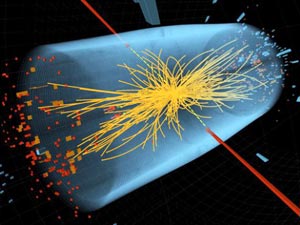
இவ்வளவு சூட்சுமமான உண்மையைத் தேட முதலில் வழி கோலிய சத்யேந்திரநாத் போஸுக்கு நம்முடைய அரசாங்கம் என்ன செய்தது? அவர் 1974 வரை வாழ்ந்தார். அவர் தன்னுடைய 80-ஆவது வயதில் இறந்தபோது, அவர் யார் என்று கூட நம் நாட்டில் யாருக்கும் தெரியாது. உப அணுக்கள் பற்றி அவருக்குக் கிடைக்க வேண்டிய நோபல் பரிசு, என்ரிகோ பெர்மி என்கிற இத்தாலிய நாட்டுக்காரருக்கு கிடைத்தது. 1954-ஆம் ஆண்டு போனால் போகிறது என்று அரசியல்வாதிகளிலிருந்து வணிகர்கள், நடிகர்கள், நடிகைகள் வரை எல்லோருக்கும் அளிக்கும் பத்மபூஷண் விருதை அவருக்கு அளித்தது அரசு.
அணு என்றால் என்ன?
அணு என்பதை கண்ணால் காண முடியாது, தொட்டு உணர முடியாது, நுகரவும் முடியாது. அப்படிப் பார்க்க முடியாத, உணர முடியாத, நுகர முடியாத அணுக்களால்தான், நம்முடைய உடல், நாம் உண்ணும் உணவு, உடுக்கும் உடை, குடிக்கும் நீர், நம்மைத் தாங்கும் நிலம், நாம் பார்க்கும் மரம், செடி, கொடி மற்றும் ஜடப் பொருள்கள் எல்லாமாக உருவாகியிருக்கிறது என்றால் நம்புவீர்களா? ஆனால், அதுதான் அணு. விஞ்ஞானப்படியும் நம்முடைய மெய்ஞானப்படியும் உண்மை. அந்த அணுக்களுக்குள் உப அணுக்கள் மறைந்திருக்கின்றன. அந்த அணுக்களை நிர்வகிக்கும் ‘கடவுள் அணு’ என்ற ஒன்று இருக்கிறது என்றால், எந்த அளவுக்கு சூட்சுமமானது அந்த அணு!
21 நூற்றாண்டுகளுக்கு பிறகும் நம்பிக்கை அளிக்கும் மெய்ஞானம்:
மெய்ஞானம் கூறும் கடவுளை அடையும் வழி:
அணுவில் அணுவினை ஆதிப் பிரானை
அணுவில் அணுவினை ஆயிரம் கூறிட்டு
அணுவில் அணுவை அணுக வல்லார்கட்கு
அணுவில் அணுவை அணுகலும் ஆமே.
- திருமந்திரம்-2008
விளக்கம்:
அணுவுக்கும் அணுவான அடிப்படைத் துகள்களை ஆயிரம் துண்டாக்கி, அதில் ஒரு துண்டுக்குள், நுண்ணியதாக உள்ள பரமாணுவை நெருங்க கூடியவர்களுக்கு. பரம்பொருளை அடைதலும் கைகூடும்.
இன்றைய விஞ்ஞானத்தோடு ஒத்துப்போகும் கருத்துகள்:
கடவுள் துகள்:(God’s Particle)
ஜெனிவா ஃப்ரான்ஸ் எல்லைப்பகுதியில் 27 கி.மீ சுற்றளவில் லார்ஜ் ஹாட்ரான் கொலைடர் என்ற துகள் முடக்கி சோதனைச்சாலை அமைந்துள்ளது. இதில் அணுவின் அடிப்படை துகள்களை (ப்ரோட்டான் => குவார்க் => க்ளுவான்) கட்டமைக்கும் பரமாணு அதாவது கடவுள் துகள் (Higgs boson) எது? என்ற சோதனை நடந்து வருகின்றது.

செயல்படும் முறை:
லார்ஜ் ஹாட்ரான் கொலைடரில் அணுவின் அடிப்படைத்துகளான ப்ரோட்டான்களை (நேர்மங்களை) கிட்டதட்ட ஒளியின் வேகத்தில் (வினாடிக்கு 300000கி.மீ) ஒன்றோடொன்று மோதவிட்டு, பிறகு வெளிப்படும் துகள்களில் “அணுவின் அடிப்படைத் துகள்களையே கட்டமைக்கும் பரமாணு அதாவது கடவுள் துகள் (Higgs boson) ஏதேனும் வெளிப்படுகின்றதா என்று சோதனை செய்யப்பட்டு வருகின்றது.
பிரபஞ்சம் உருவான வரலாறை ஆய்வு செய்து வரும் விஞ்ஞானிகள், ஆய்வின் முக்கியமான முன்னேற்றமாக “கடவுளின் அணுத்துகள்” என அழைக்கப்படும் “ஹிக்ஸ் போசன்’ என்ற பொருளை கண்டுபிடித்துள்ளனர்.
பிக்பேங்:”பிக்பேங்’ என்ற பிரளய வெடிப்புக்கு பின் இந்த பேரண்டம் உருவானது என்று கூறப்படுகிறது. இந்த வெடிப்பு நிகழ்ந்த பொழுது அணுக்களுக்கு எடை இல்லை. ஆனால் இந்த அணுக்களுக்கு, “ஹிக்ஸ் போசன்’ என்ற கட்டத்தை கடந்த பின் தான் நிறை கிடைக்கிறது. முதலில், ஹிக்ஸ் போசனை கண்டுபிடிக்கும் முயற்சியை அமெரிக்கா தொடங்கியது, சரியான பலன் கிடைக்காததால் ஆராய்ச்சி கைவிடப்பட்டது.
ஐரோப்பிய அணு ஆராய்ச்சிக் கழகம் சோதனையை தொடங்கியது. இதற்காக செயற்கையாக பெரிய ஆட்ரான் மோதுவி என்னும் ரட்சத ஆய்வுக் கூடத்தில் நியூட்ரான் – புரோட்டான்களை மோதவிட்டனர். வெடித்து சிதறிய செயற்கை பிரளயத்தில் ஹிக்ஸ் போசனை கண்டுபிடிக்கும் முயற்சியில் ஈடுபட்டனர். “ஸ்டாண்ட் மாடல்’ என்ற தியரியின் படி, ஹிக்ஸ் போசானுக்கு 125 கிகா எலக்ட்ரான் வோல்ட் இருக்க வேண்டும் என்று கருதப்படுகிறது. இது பேரண்டத்தின் பெரும் பகுதியை அடைத்திருக்கிறது என்றும் நம்பப்படுகிறது. இத்துகளால் பதிக்கப்படாதாது போட்டான்கள் மட்டுமே. மற்ற அணுக்கள் இத்துகளால் மட்டுமே நிறையை பெறுகின்றன.
தற்போது இந்த ஆராய்ச்சியில் 125 கிகா எடை கொண்ட துகள் கண்டுபிடிக்கப்பட்டுள்ளது. இது ஹிக்ஸ் போசானாகத்தன் இருக்க வேண்டும் என்கின்றனர் விஞ்ஞானிகள். இக்கண்டுபிடிப்பு வெறும் ஆரம்ப கட்டம் தான். விஞ்ஞானிகள் போக வேண்டிய தூரம் நிறைய இருக்கிறது.
மேற்கண்ட இருநிகழ்வுகளில் நோக்கமும், செய்முறையும் எந்தளவுக்கு ஒத்துபோகின்றது என்று தாங்களே நன்கு உணர்வீர். ஏனெனில் நாம் இதை தற்பொழுது “மதிப்பெண்களுக்காக” படிக்கவில்லை.
ஆன்மீகத்தில் அறிவியலை புகுத்தி நமக்காக நமது முன்னோர்கள் விட்டு சென்ற குறிப்புகள் ஏராளம். அதில் ஒன்று தான் கடவுள் துகள் குறித்த இன்றைய ஆராய்ச்சி.

திருமூலர் இதை நிரூபித்து எழுதினாரா?
கோட்பாட்டு இயற்பியலில் (Theoretical Physics) எதையும் அவ்வளவு சீக்கிரத்தில் அதி உயர் கணினியில் (Super Computer) கூட நிருபிக்க முடியாது என்பதே உண்மை.
(எ.கா) அற்புதமான இயற்பியலாளர் ஐன்ஸ்டீன் சிறப்பு சார்பியல் கொள்கை (Special Theory of Relativity), பொது சார்பியல் கொள்கைகளை (General Theory of Relativity) சோதனை செய்து கண்டுபிடிக்கவில்லை காரண காரியங்களை வைத்தே கண்டுபிடித்தார். திருமூலர் போன்ற சித்தர்கள் மிகச்சிறந்த சிந்தனையாளர்களாக மட்டுமள்ளாமல் நம்மை விட பல பல மடங்கு மூடநம்பிக்கைகளை எதிர்த்தார்கள் என்பதே உண்மை.
c. Parkavi.....
Tuesday, 18 June 2013
Raja Raja Chola I
From Wikipedia, the free encyclopedia
Jump to: navigation, search
|
|
This article needs additional citations for verification. Please help improve this article by adding citations to reliable sources. Unsourced material may be challenged and removed. (March 2011) |
|
|
This biographical article needs additional citations for verification. Please help by adding reliable sources. Contentious material about living persons that is unsourced or poorly sourced must be removed immediately, especially if potentially libelous or harmful. (April 2013) |
| Rajaraja I Mummudi Cholan |
|
|---|---|
 Rajaraja Chola's statue at Brihadisvara Temple, Thanjavur |
|
| Born | 947 CE |
| Died | 1015 CE |
| Title | Rajakesari |
| Predecessor | Uttama Chola |
| Successor | Rajendra Chola I |
| Religion | Hindu, Shaivism |
| Spouse(s) | Lokamahadevi Cholamahadevi Trailokyamahadevi Panchavanmahadevi Abhimanavalli Iladamadeviyar Prithivimahadevi |
| Children | Rajendra Chola I Kundavai Madevadigal |
|
||||||||||||||||||||||||||||||||||||||||||||||
|
||||||||||||||||||||||||||||||||||||||||||||||
Dates
The key dates of Raja Raja's rule are difficult to come by. Scholar N.Sethuraman concludes that he was born in circa 947 CE, was crowned on 18 July 985 and died in 1014 in the Tamil month of Maka.[4]Popular Prince
Raja Raja Chola was born in Thirukoilur ( head quarters of Nadu Naadu) as Arulmozhivarman, the third child of Parantaka Sundara Chola (Aditya Karikala was the elder son and Kundhavai the elder sister) and Vanavan Maha Devi of the Velir Malayaman dynasty. Aditya karikala was not declared as the crown prince. During the lifetime of his father Sundara Chola, Arulmozhivarman had carved a name for himself through his exploits in the battles against the Sinhala and Pandyan armies. Sundara Chola’s eldest son and heir apparent Aditya II was assassinated under unclear circumstances.[5] Madhuranthaga, as the only child of Gandaraditya (the brother of Arinjaya Chola), wanted the Chola throne as he felt it was his birthright. After the death of Aditya II, Madhuranthaga was declared by Sundara Chola as the heir apparent ahead of Arulmozhivarman.[5] Arulmozhivarman ascended the throne after the death of Madhuranthaga (Uttama Chola).[5] The Thiruvalangadu copper-plate inscriptions say:- "…Though his subjects…entreated Arulmozhi Varman, he…did not desire the kingdom for himself even inwardly ".
- "Having noticed by the marks (on his body) that Arulmozhi was the very Vishnu, the protector of the three worlds, descended on earth, [Madhuranthaga] installed him in the position of Yuvaraja (heir apparent) and himself bore the burden of ruling the earth…"
Military conquests
Southern wars
The southern kingdoms of Pandyas, Cheras and the Sinhalas were often allied against the Cholas.[6] It was the case when Rajaraja came to the throne. Rajaraja's initial campaigns were against the combined Pandya and Chera armies. There is no evidence of any military campaign undertaken by Rajaraja until the eighth year of his reign. During this period he was engaged in organising and augmenting his army and in preparing for military expeditions.[7]Kandalur Salai
The first military achievement of Rajaraja’s reign was the campaign in Kerala c. 994 CE. Rajaraja’s early inscriptions use the descriptive ‘Kandalur salai kalamarutta’ (காந்தளுர் சாலைக் களமறுத்த). In this campaign Rajaraja is said to have destroyed a fleet in the port of Kandalur, which appears to have been situated in the dominions of the Chera King Bhaskara Ravi Varman Thiruvadi (c. 978–1036 CE).[7][8] Inscriptions found around Thanjavur show that frequent references are made to the conquest of the Chera king and the Pandyas in Malai-nadu (the west coast of South India). Kandalur-Salai, which later inscriptions claim to have belonged to the Chera king, was probably held by the Pandyas when it was conquered by Rajaraja. Some years' fighting apparently was necessary before the conquest could be completed and the conquered country could be sufficiently settled for its administration could be properly organised.[9] In the war against the Pandyas, Rajaraja seized the Pandya king Amarabhujanga and the Chola general captured the port of Virinam. To commemorate these conquests Rajaraja assumed the title Mummudi-Chola, (the Chola king who wears three crowns – the Chera, Chola and Pandya) and according to tradition the title Raja Raja was conferred on him by serving members of Chidambaram temple of ancient who had also the duty of conducting the swearing in ceremony of chola and pallava princes.Malai Nadu
In a battle against the Cheras sometime before 1008 CE, Rajaraja captured Udagai in the western hill country. Kalingattuparani, a war poem written during the reign of Kulothunga Chola I hints at a slight on the Chola ambassador to the Chera court as the reason for this sacking of Udagai. Rajaraja's son Rajendra was the Chola general leading the army in this battle.[7] A place named Udagai is mentioned in connection with the conquest of the Pandyas. The Kalingattu-Parani refers to the “storming of Udagai” in the verse, which alludes to the reign of Rajaraja. The Kulottunga-Cholan-ula also mentions the burning of Udagai. This was probably an important stronghold in the Pandya country, which the Chola king captured. The Tamil poem Vikkirama Cholan ula mentions the conquest of Malai Nadu and the killing of 18 princes in retaliation of the insult offered to an envoy.[10]Invasion of Lanka
See also: Chola occupation of Sri Lanka (993-1077)
To eliminate the remaining actor in the triumvirate, Rajaraja invaded
Sri Lanka in 993 CE. The copper-plate inscription mention that
Rajaraja’s powerful army crossed the ocean by ships and burnt up the
kingdom of Lanka. Mahinda V
was the king of Sinhalas. In 991 CE, Mahinda’s army mutinied with help
from mercenaries from Kerala. Mahinda had to seek refuge in the southern
region of Rohana. Rajaraja utilised this opportunity and invaded the
island. Chola armies occupied the northern half of Lanka and named the
dominion ‘Mummudi Chola Mandalam’. Anuradhapura,
the 1400-year-old capital of Sinhala kings was destroyed. The
destruction was so extensive the city was abandoned. Cholas made the
city of Polonnaruwa as their capital and renamed it Jananathamangalam. The choice of this city demonstrates the desire of Rajaraja to conquer the entire island. Rajaraja also built a Temple for Siva in Pollonaruwa.[10]
RajaRajan's desire to bring the whole Lankan island under Cholan empire
was never fulfilled and the southern part of the island (Ruhuna) remained independent. Later, king Vijayabahu I successfully drove the Chola out of Sri Lanka in 1070, reuniting the country for the first time in over a century.[11][12]Northern Wars
Rajaraja also expanded his conquests in the north and northwest. The regions of Gangapadi (Gangawadi), Nolambapadi (Nolambawadi), Tadigaipadi came into Chola possession during Rajaraja.
Mural found in the Brihadeesvara temple, Tamil Nadu, 11th century. The
belief that this represents Rajaraja Chola (in the background) and his
guru Karuvurar is contested.[13]
Ganga Wars
Before his 14th year c. 998–999 CE, Rajaraja conquered Gangapadi (Gangawadi) and Nurambapadi (Nolambawadi), which formed part of the present Karnataka State. This conquest was facilitated by the fact the Cholas never lost their hold of the Ganga country from the efforts of Sundara Chola. Nolambas who were the feudatories of Ganga could have turned against their overlords and aided the Cholas to conquer the Gangas, who were the chief bulwark against the Chola armies in the northwest.The invasion of the Ganga country was a success and the entire Ganga country was under the Chola rule for the next century. The easy success against the Gangas was also due to the disappearance of Rashtrakutas c. 973 CE as they were conquered by the western Chalukyas. From this time, the Chalukyas became the main antagonists of Cholas in the northwest.
Western Chalukya Wars
During the reign of Rajaraja Chola, there were continuous wars with the Western Chalukyas to assert supremacy and there are multiple epigraphic evidences that show that the Cholas were constantly fighting with the Chalukyas or against the vassals of the latter. It is unclear as to why Rajaraja mounted an invasion against Satyasraya. According to historian Eugen Hultzsch the circumstances that led to the war are not mentioned in any of Rajaraja's inscriptions. But we do know that the rulers of these two conquered provinces were originally feudatories of the Rashtrakutas.[14] An inscription of Irivabedanga Satyasraya from Dharwar describes him as a vassal of the Western Chalukya Ahvamalla for he describes himself as a bee at the lotus feet of Ahavamalldeva in 1002 A.D. An inscription of Rajaraja asserts that he captured Rattapadi by force. Rajendra led the Chola armies against the Western Chalukyas and would turn Manyakheta, the Chalukyan capital into his own playground. Raja Raja I claims damages worth "seven and a half lakshas from Irattapadi which was evidently the site of war with Satyashraya resulting in victory for Raja Raja I and payment of damages by the Chalukya king. Chalukya kingdom Satyashraya would renege on his promise of agreeing to Chola suzerainty, but would be defeated by Rajendra Chola I when he became king. Irivabedanga Satyasraya partially acknowledges this Chola onslaught in his Hottur (Dharwad) inscription as he screams in pain. In his own words he calls himself the ornament of Chalukya race and the slayer of the Tamil. He identifies his opponent as Rajaraja Nittavinodha Rajendra Vidyadhara, the ornament of the Chola kula Nūrmadi Chola(one hundred times more powerful).[15] In the same inscription, he accuses Rajendra of having arrived with a force of 900,000 and of having gone on rampage in Donuwara thereby blurring the moralities of war as laid out in the Dharmasastras.[16] He says that his opponent destroyed the caste (jāti nāsa) of his people. Historians like James Heitzman, Wolfgang Schenkluhn conclude that this confrontation displayed the degree of animosity on a personal level between the rulers of the Chola and the Chalukya kingdoms, the feeling of otherness and their inability to identify with the other side that degenerated to a level of violence that overthrew the established social order(destruction of caste). They also draw a parallel between this relationship and the enmity between the Chalukyas of Badami and the Pallavas of Kanchi.[17] There is also epigrahic evidence of earlier encounters between the Cholas and the Hoysalas who were vassals of the Western Chalukyas during the reign of Rajaraja Chola. An inscription from the roof of the Gopalakrishna temple at Kaleyur in the Tirumukudalu Narasipur taluk dated in Saka 929 being current, Parabhava, corresponding to 1006 A.D, records that Rajaraja's viceroy Aprameya displayed his valor by slaying the Hoysala minister Naganna and multiple other generals of the Hoysalas like Manjaga, Kalega(or Kali Ganga), Nagavarman, etc.[18] There is also a similar inscription in the Channapatna taluk that shows Rajaraja crushing the Hoysalas.[19] Rajaraja evidently attached much importance to his victory over Satyasraya, as he is said to have presented gold flowers to the Rajarajesvara temple on his return from the expedition. At the end of this war, the southern banks of the Tungabadhra river became the frontier between these two empires.War against Vengi
The cholas in pursuit of their objective of annihilating to ground evil kingdoms" and hence destroy the excessive wickedness of age of Kali had clashed with many kingdoms and one of which was Vengi. Parantaka Chola I who had made extensive conquests had in fact subdued the Deccan kingdom that flourished in this region in 913.C.E. Even in Inscriptions of Sundarachola we find a Chola regiment in Eastern Deccan preparing to invade Odisha. Thus there is no truth in the proposition of "Chola Throne" ties with "Vengi".Some of Chola Inscriptions of Raja Raja note how during a war against Vengi, the king himself took initiative and killed a certain ruler called Bheema ruling that area because " he felled one of his commanders". Thus even if Cholas had reigned supreme in Eastern Deccan it was certainly a military vision and the small province of Vengi most probably served as a military base for Cholas who frequently sent in expeditions to Odisha and Western Deccan. We know about such base building activities down south in Pandyan country and also near Suchindram and Colombo in Lanka where the Cholas are known to have built naval bases and also " some temples for Lord Vishnu ".
Kalinga conquest
The invasion of the kingdom of Kalinga must have occurred subsequent to the conquest of Vengi.[20] Rajendra Chola, as the commander of the Chola forces invaded and defeated the Andhra king Bhima.Naval Conquests
One of the last conquests of Rajaraja was the naval conquest of the ‘old islands of the sea numbering 12,000’, the Maldives.[21]We have no further details regarding this expedition, however this is a sufficient indication of the abilities of the Chola Navy, which was utilised effectively under Rajendra I. Chola Navy also had played a major role in the invasion of Lanka.[22]
The increasing realization of the importance of a good Navy and the desire to neutralize the emerging Chera Naval power were probably the reasons for the Kandalur campaign in the early days of Rajaraja’s reign.[23]
Nagapattinam on the Bay of Bengal was the main port of the Cholas and could have been the navy headquarters.Bay of Bengal called as Chola lake Hope the Tamil King - Rajaraja Chola was the First Indian Ruler to establish the First Indian Naval Fleet some 1200 years back. He had established his rule extending from India up to South East Asia with his Naval Fleet. His rule extended beyond the Bay of Bengal Sea. He even ruled the Java, Sumatra lands in S.E.Asia, parts of Malaysia, Myanmar, Brunei islands and even some territory Islands that belongs to Australia & even Tasmania, New Zealand.
The Tamil king Rajendra Chola, son of Raja Raja Chola also has the Honour of establishing the first Indian merchant naval fleet. He transformed the Naval Fleet of his Father into Merchant Naval Fleet and thereby established Trade from India to the S.E.Asia and even the China. There are also evidence that they had Trade through Sea with the Romans.....
Thanjavur Temple
Main article: Brihadisvara Temple
Rajaraja’s reign is commemorated by the Siva temple in Thanjavur,
called Raajarajeswaram. The Peruvudaiyar Koyil (Tamil: பெருவுடையார்
கோயில், peruvuḍaiyār kōyil ?), also known as Brihadeeswarar Temple,
Rajarajeswaram and ‘Big Temple', turned 1000 years old in 2010.The
temple is now recognised as a UNESCO World Heritage Site, forming part of the Great Living Chola Temples site.The construction of the temple is said to have been completed on the 275th day of the 25th year of his reign.[24] After its commemoration the temple and the capital had close business relations with the rest of the country and acted as a centre of both religious and economic activity. Year after year villages from all over the country had to supply men and material for the temple maintenance.[25]
The tower or the sikhara is very high and decorated with sculptures. The entrance to the temple is a high gateway which is also beautifully decorated with sculptures called the gopuram. Nandi, Shiva's bull, guards the temple. Stories of Shiva and Parvati and moreover, eighty one poses of Bharatnatyam are carved on the walls of the temple.
Administration
From the 23rd to the 29th year of Rajaraja’s rule his dominions enjoyed peace and the king apparently devoted his energies to the task of internal administration. The building of the Rajarajesvara temple in Thanjavur and the various endowments and gifts to it must have occupied a prominent place in the king’s mind during these years.Rajaraja carried out a revenue and settlement during the final years of his reign. Inscriptions found in the Thanjavur temple bear testimony to the accuracy of this operation. Land as small in extent as 1/52,428,800,000 of a ‘veli’ (a land measure) was measured and assessed to revenue. The revenue survey enabled for the confiscation of lands of the defaulting landlords.[26]
Rajaraja also perfected the administrative organisation by creating a strong and centralised machinery and by appointing local government authorities. He installed a system of audit and control by which the village assemblies and other public bodies were held to account while not curtailing their autonomy.
He promoted International trade by patronising "Thisai ayirathi ettu Ainootruvar", which is an ancient Tamil trade organisation which carried on trade from the length and breadth of the Indian Ocean From the Arabia to the Malaya.
Military Organisation
Rajaraja created a powerful standing army and a considerable navy which achieved even greater success under his son Rajendra. The prominence given to the army from the conquest of the Pandyas down to the last year of the king’s reign is significant, shows the spirit with which he treated his soldiers. A number of regiments are mentioned in the Tanjore inscriptions and it is evident that Rajaraja gave his army its due share in the glory derived from his extensive conquests.In most of the foregoing names the first portion appears to be the surnames or titles of the king himself or of his son. That these regiments should have been called after the king or his son is indicative of the attachment the Chola king bore towards his army.
It is possible that these royal names were pre-fixed to the designations of these regiments after they had distinguished themselves in some engagement or other. It is worthy of note that there are elephant troops, cavalry and foot soldiers among these regiments. To some of these regiments, the management of certain minor shrines of the temple was entrusted and they were expected to provide for the requirements of the shrine. Others among them took money from the temple on interest, which they agreed to pay in cash. We are not, however, told to what productive purpose they applied this money. At any rate all these transactions show that the king created in them an interest in the temple he built.
Officials and Feudatories
Rajendra Chola was made co-regent during the last years of Rajaraja’s rule. He was also the Mahadandanayaka Panchavan Maharaya – supreme commander- of the northern and northwestern dominions. Uttarangudaiyan Kon Vidividangan alias Villavan Muvendavelan was one of the top officers (Perundaram) of Rajaraja. He figures in many of his inscriptions most notably when he and other top officers take a vow to light lamps and make other donations if they escaped from being disgraced during the military operations towards the end of Rajaraja's reign.Paluvettaraiyars from the region of Thiruchirapalli were closely associated with the Cholas from the time of Parantaka I when he married a Paluvettaraiyar princess, were occupying a high position in the Chola administration. They were apparently enjoying full responsibility and administration of the region of Paluvur. One of the names of these feudal chieftains found in inscriptions were Adigal Paluvettaraiyar Kandan.He built a massive temple in Gangai konda cholapuram a mile stone of chola architecture. Madurantakan Gandaradityan who served in Rajaraja’s court as an important official in the department of temple affairs. He conducted enquiries into temple affairs in various parts of the country, punishing defaulters.
The other names of officials found in the inscriptions are the Bana prince Narasimhavarman, a general Senapathi Sri Krishnan Raman, the Samantha chief Vallavarayan Vandiyadevan, the revenue official Irayiravan Pallavarayan and Kuruvan Ulagalandan who organised the country-wide land surveys.
Standardised Inscriptions
Due to Rajaraja's desire to record his military achievements in every one of his inscriptions he handed down to posterity some of the important events of his life. As far as we know at present, Rajaraja was the first king of South India to introduce this innovation into his inscriptions. Before his time powerful kings of the Pallava, Pandya and Chola dynasties had reigned in the South, and some of them had made extensive conquests. But none of them seems to have considered leaving a record on stone of his military achievements.The idea of Rajaraja to add a short account of his military achievements at the beginning of every one of his inscriptions was entirely his own. His action in this respect is all the more laudable because his successors evidently followed his example and have left us more or less complete records of their conquests. But for the historical introductions, which are often found at the beginning of the Tamil inscriptions of Chola, kings the lithic records of the Tamil country would be of very little value, and consequently even the little advance that has been made in elucidating the history of Southern India would be difficult.
An inscription by Rajaraja in Tamil, found in the Mulbagal district of Karnataka, shows his accomplishments as early as the 19th year. An excerpt from such a Meikeerthi, an inscription recording great accomplishments, follows:[27]
ஸ்வஸ்திஸ்ரீ் திருமகள் போல பெருநிலச் செல்வியுந் தனக்கேயுரிமை பூண்டமை மனக்கொளக் காந்தளூர்ச் சாலைக் களமறூத்தருளி வேங்கை நாடும் கங்கைபாடியும் நுளம்பபாடியும் தடிகை பாடியும் குடமலை நாடும் கொல்லமும் கலிங்கமும் எண்டிசை புகழ்தர ஈழ மண்டலமும் இரட்டபாடி ஏழரை இலக்கமும் திண்டிறல் வென்றி தண்டால் கொண்டதன் பொழில் வளர் ஊழியுள் எல்லா யாண்டிலும் தொழுதகை விளங்கும் யாண்டே செழிஞரை தேசுகொள் ஸ்ரீ்கோவிராஜராஜகேசரி பந்மரான ஸ்ரீராஜராஜ தேவர்
| “ |
|
” |
Religious Policy
An ardent follower of Saivism (one of the 4 major streams of Hinduism), Rajaraja was nevertheless tolerant towards other faiths and creeds. He also had several temples for Vishnu constructed. He also encouraged the construction of the Buddhist Chudamani Vihara at the request of the Srivijaya king Sri Maravijayatungavarman. Rajaraja dedicated the proceeds of the revenue from the village of Anaimangalam towards the upkeep of this Vihara.Tirumurai Compilation
Raja Raja Chola embarked on a mission to recover the hymns after hearing short excerpts of Tevaram in his court.[29] He sought the help of Nambi Andar Nambi, who was a priest in a temple.[30] It is believed that by divine intervention Nambi found the presence of scripts, in the form of cadijam leaves half eaten by white ants in a chamber inside the second precinct in Thillai Nataraja Temple, Chidambaram.[29][30] The brahmanas (Dikshitars) in the temple opposed the mission, but Rajaraja intervened by consecrating the images of the saint-poets through the streets of Chidambaram.[29][31] Rajaraja thus became to be known as Tirumurai Kanda Cholan meaning one who saved the Tirumurai.[31] Thus far Shiva temples only had images of god forms, but after the advent of Rajaraja, the images of the Nayanar saints were also placed inside the temple.[31] Nambi arranged the hymns of three saint poets Sambandar, Appar and Sundarar as the first seven books, Manickavasagar's Tirukovayar and Tiruvacakam as the 8th book, the 28 hymns of nine other saints as the 9th book, the Tirumandiram of Tirumular as the 10th book, 40 hymns by 12 other poets as the 10th book, Tirutotanar Tiruvanthathi - the sacred anthathi of the labours of the 63 nayanar saints and added his own hymns as the 11th book.[32] The first seven books were later called as Tevaram, and the whole Saiva canon, to which was added, as the 12th book, Sekkizhar's Periya Puranam (1135 CE) is wholly known as Tirumurai, the holy book. Thus Saiva literature which covers about 600 years of religious, philosophical and literary development.[32]Personal Life and Family
Rajaraja was born Arulmozhivarman and was the third child of Parantaka Sundara Chola.Rajaraja Chola's mother, Vaanavan Maadevi, was the daughter of Thirukkovilur king, Malayamaan Thirumudi Kaari.
His elder brother Aditya II was assassinated c. 969 CE. He had great respect for his elder sister Ālvār Sri Parāntakan Sri Kundavai Pirāttiyār or more popularly referred to as Kundavai Pirāttiyār. We also know of at least one daughter of Rajaraja called Rajaraja Kundavai Alvar who he named after his sister.[33][34] Rajaraja had a number of wives. According to inscriptions, at least 15 names are mentioned as his wives - Ulagamaga Deviyari,Thidaipiran magal Chola Madeviyar,Abhimanavaliyar,Thirailokiya Madeviyar,Panchavan Madeviyar,Piruthivi Madeviyar,Elada Madeviyar,Meenavan Madeviyar,Nakkan Thillai Alzagiyar,Kaadan Thongiyar,Koothan Veeraniyar,Elangon Pichiyar.[35] Also Elangon Pichiyar was the daughter of Vallavaraiyan Vandhiyathevan and Kundavai Nachiyar. The mother of Rajendra I, the only known son of Rajaraja, was Vaanathi (otherwise called as Thiripuvana Madeviyar), Princess of Kodumbaalur. Rajaraja must have had at least three daughters. One of the daughter was named after Rajaraja Cholan's sister -Kundavai who was married to the Chalukya Prince Vimaladithan. Another daughter was called as Mathevalzagal and was mentioned as the Naduvit Penn (meaning middle daughter) in one of the Thiruvilachuzhi inscriptions.[35] The name of the third daughter is not known.
Rajaraja was succeeded by Rajendra Chola I. His natal star was Sadhayam. It was celebrated as Sadhaya-nal vizha, a 7 day festival culminating on his star birthday during the king and his son's reign.[36] Rajaraja also bore the title Telungana Kula Kala.[37][38][39] He was also known as Rajaraja Sivapada Sekhara (he who had the feet of Lord Shiva as his crown).[40]
Historic novels featuring Rajaraja Chola-I
- Ponniyin Selvan,written by amarar kalki revolves around the life of raja raja chola and his ambition for annexing lanka.
- Arulmozhi Varman, is the hero of Kalki Krishnamurthy’s historical novel. Its plot revolves around the mysteries surrounding the assassination of Aditya Karikalan and the subsequent accession of Uttama to the Chola throne. Kalki imagines Arulmozhi sacrificing his rightful claim to the throne by crowning Uttama during his own coronation.
- Arulmozhi Varman, is the hero of Vembu Vikiraman’s historical novel Nandipurathu Nayagi. The plot of the story revolves around the ascension of Uttama Chola to the throne and Raja Raja's tour to the distant sea countries.
- Rajaraja Cholan – Drama, written by Aru. Ramanathan, called as Kathal Ramanathan. (TKS Group made numerous Stage Shows on this Drama and later it was taken as Movie acted by Shivaji Ganesan). This drama as a book Published by Prema Pirasuram, Chennai. is made as a Study Material in South Indian Universities.
- Balakumaran has also written the story Udaiyar based on the life of Rajaraja Chola. While Kalki's novel describes his life at his youth at the time of the death of Aditya Karikala, Bala Kumaran deals with Rajaraja Chola's life after he becomes the emperor.
- In January 2007, Kaviri Mainthan – a novel set in the Chola period and a sequel to Ponniyin Selvan was written by Anusha Venkatesh, published by The Avenue Press.
- Sujatha wrote a novel "Kandalur Vasantha Kumaran Kathai", which deal with the situations leading Raja raja to invade Kandhalur, a sea port.
- Gokul Seshadri has written a novel "Rajakesari", which deals with the after effects of Kandhalur invasion, in Rajaraja Chola's life. Also there is another novel "Cherar Kottai" by the same author, which deals with the Kandhalur invasion by Rajaraja Chola.
Subscribe to:
Posts (Atom)



